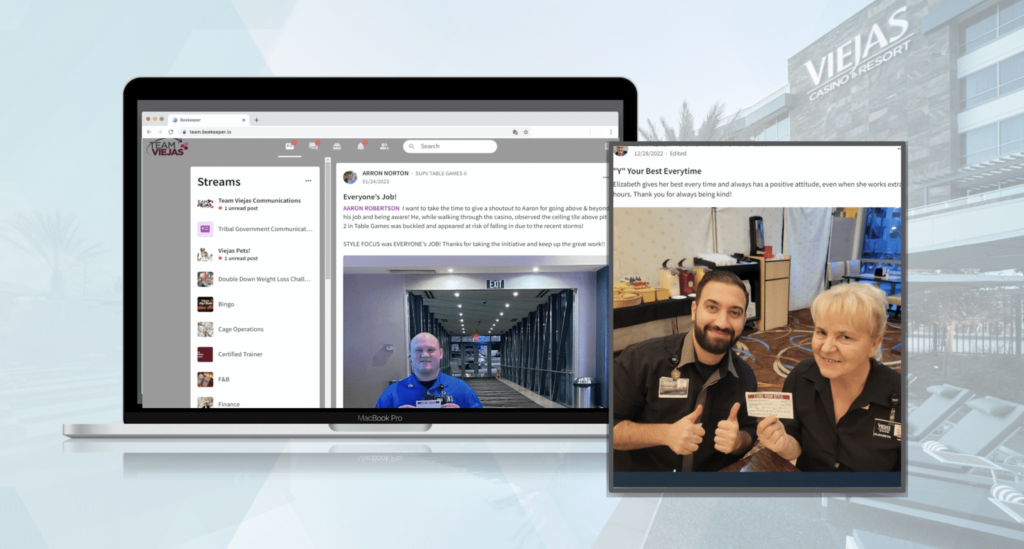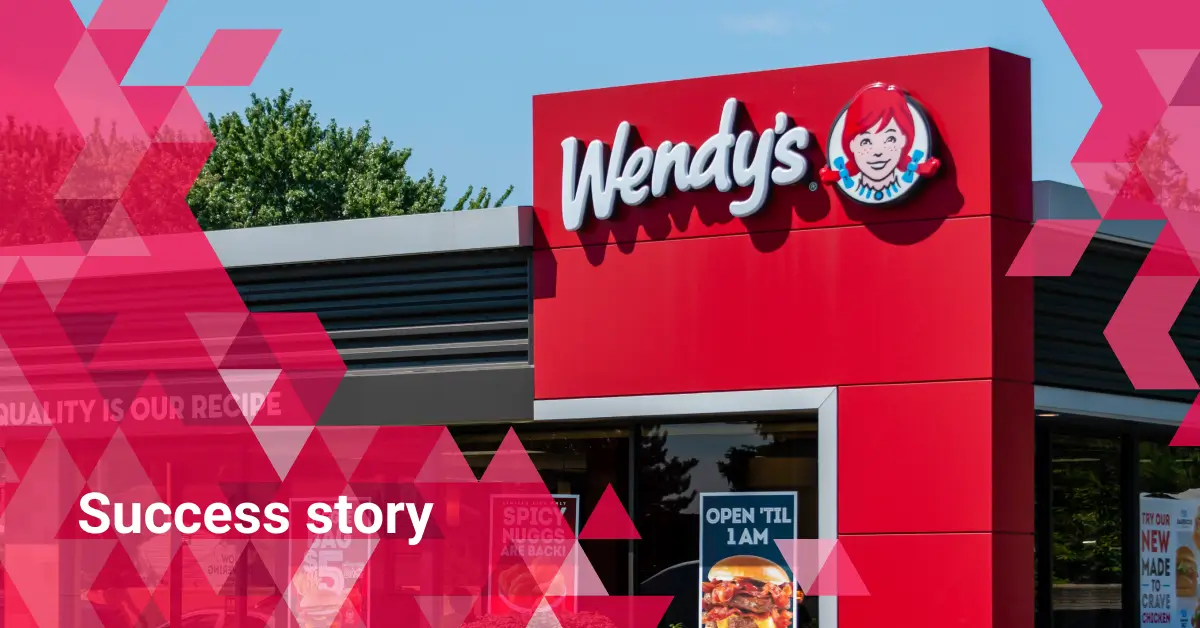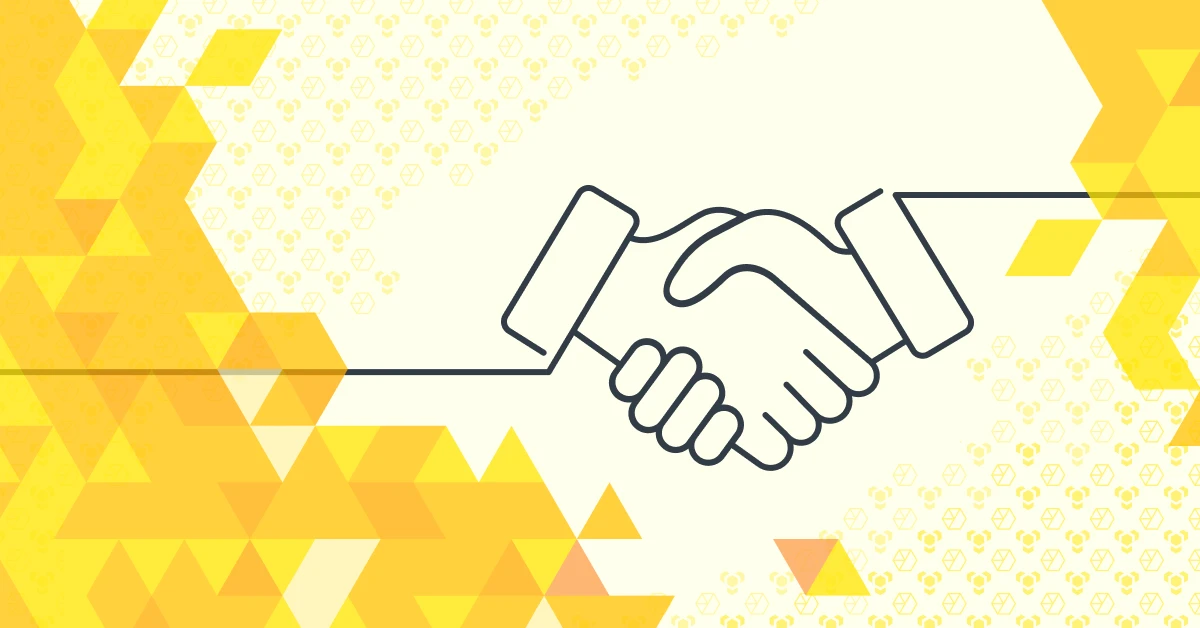Design Effective Employee Recognition Boards (A Step-by-Step Guide with Bonus Ideas)

Table of contents
- What are Employee Recognition Boards?
- The Difference Between Employee Reward and Recognition
- Benefits of Creating Employee Recognition Bulletin Boards
- 10 Steps to Design Employee Recognition Display Boards
- Top Examples of Employee Recognition
- Bonus: 3 (Virtual) Employee Recognition Board Ideas
- Employee Recognition Boards – A Step Towards Better Engagement
What limits a frontline worker from being their most productive and engaged self?
At Beekeeper, we asked frontline workers about what limits their productivity.
Enter: employee recognition boards. They can be a powerful tool for motivating and connecting with your teams.
We’ll be looking at:
- The difference between employee recognition and rewards
- The benefits of employee recognition bulletin boards
- Examples of employee recognition boards
- Employee recognition boards ideas
Let’s begin.
What are Employee Recognition Boards?
Employee recognition boards are physical or virtual displays that are used to publicly acknowledge and appreciate the achievements and contributions of employees. These boards serve as a visual representation of recognition, highlighting the individual or team’s accomplishments, and creating a sense of pride and motivation in the workplace.
The purpose of employee recognition boards is to foster a positive and inclusive work environment. They provide a platform for celebrating success and showcasing the efforts of employees, which can boost morale, enhance teamwork, and increase overall job satisfaction. By recognizing and appreciating employees in a public setting, it not only acknowledges their hard work but also encourages others to strive for excellence.
As you can imagine, this gives new hires a great first impression and makes them more likely to stay. With the help of a few other initiatives, they’ve boosted overall retention rates by 20%.
Physical recognition boards are typically displayed in a central location within the workplace, such as a break room or hallway, where everyone can easily see and interact with them. These boards often include photos, certificates, or notes of appreciation from colleagues or management.
On the other hand, virtual recognition boards are digital platforms where employees can submit recognition messages, photos, or videos. These boards provide a virtual space for employees in remote or distributed teams to participate in the recognition process and engage with their colleagues.
Compared to other forms of employee recognition, like “employee of the month” programs, recognition boards offer a more inclusive approach. While “employee of the month” programs focus on singling out one individual, recognition boards allow for the celebration of multiple employees and their achievements. This inclusivity helps to build a stronger sense of community and teamwork within the organization.
Employee recognition boards, whether physical or virtual, play a crucial role in the workplace by publicly acknowledging and appreciating the hard work and achievements of employees. They create a positive work environment, boost morale, and foster a sense of pride and motivation among the team.
The Difference Between Employee Reward and Recognition
Employee rewards and recognition are two distinct concepts that are often used interchangeably but have different impacts on employees in the workplace.
Rewards are tangible, often monetary or material incentives given to employees in recognition of their achievements or performance. Examples of rewards include bonuses, gift cards, extra days off, or even company-sponsored trips. These rewards serve as short-term motivators, providing immediate gratification and boosting employee morale. However, over time, the impact of rewards can diminish as employees become accustomed to them or as the novelty wears off.
On the other hand, recognition focuses on the emotional and psychological impact of acknowledging an employee’s efforts and contributions. It involves appreciation, gratitude, and praise for a job well done. Examples of recognition in a workplace context include public acknowledgment during team meetings, personalized thank you notes from managers or colleagues, or featuring the employee on a virtual platform like Beekeeper. Recognition fosters long-term satisfaction and loyalty, creating a positive work environment, enhancing employee engagement, and helping to prevent absenteeism.
While rewards can provide short-term motivation, recognition has a deeper and more lasting impact on employees. Recognition acknowledges the value and importance of an employee’s work, making them feel appreciated and valued. This emotional connection fosters a sense of loyalty, motivation, and engagement.
Rewards offer tangible incentives and short-term motivation, while recognition focuses on emotional and psychological impact, fostering long-term satisfaction and loyalty among employees. A combination of both rewards and recognition can create a balanced and effective approach to employee appreciation in the workplace.
Benefits of Creating Employee Recognition Bulletin Boards
Employee recognition bulletin boards can serve as an effective tool for acknowledging and appreciating the achievements and contributions of employees in the workplace. Here are six advantages of having employee recognition bulletin boards:
1. Increased Morale
Recognition bulletin boards create a positive and uplifting environment in the workplace. Seeing their accomplishments displayed publicly boosts employees’ morale and self-esteem, making them feel valued and appreciated. This, in turn, leads to increased job satisfaction and motivation.
2. Enhanced Teamwork
Recognition bulletin boards can foster a sense of camaraderie and teamwork among employees. When individuals see their colleagues being recognized for their achievements, it inspires them to strive for excellence and collaborate more effectively with their teammates.
3. Improved Productivity
Recognizing and appreciating employees’ efforts can have a direct impact on their productivity. When employees feel valued and acknowledged, they are more likely to go above and beyond in their work, leading to increased productivity and performance.
4. Employee Engagement
Recognition bulletin boards help create a culture of employee engagement. When employees see their accomplishments displayed, it reinforces their connection to the organization and their sense of purpose. Engaged employees are more committed, loyal, and motivated to contribute to the success of the company.
5. Positive Communication
Employee recognition bulletin boards provide a platform for positive communication within the organization. It allows employees to celebrate each other’s achievements, fostering a supportive and encouraging work environment.
6. Retention and Loyalty
Recognizing employees’ accomplishments and contributions through bulletin boards can contribute to higher employee retention rates. (P.S. We’ve got more employee retention ideas here!) When employees feel valued and appreciated, they are more likely to stay with the organization and develop a sense of loyalty.
By implementing this simple yet powerful tool, organizations can create a culture of appreciation and recognition, leading to a more motivated and committed workforce.
10 Steps to Design Employee Recognition Display Boards
Designing employee recognition display boards is an effective way to acknowledge and celebrate the achievements and contributions of employees. These boards serve as a visual representation of recognition and can boost employee morale and engagement. Let’s look at the specific steps you can take to make them:
1. Define the Purpose and Objectives
Start by clearly defining the purpose and objectives of the employee recognition display boards. Determine what you want to achieve with the boards, such as boosting employee motivation, increasing teamwork, or improving performance.
2. Establish Criteria for Recognition
Decide on the specific achievements, behaviors, or milestones that will be recognized on the display boards. This can include leadership skills, teamwork, work performance, or any other relevant criteria. Clearly communicate these criteria to employees to ensure transparency and fairness.
3. Allocate a Budget
Determine the budget for the employee recognition program, including costs for administration, technology, rewards, and incentives. Consider investing in digital platforms or tools that can simplify the nomination and recognition process.
4. Get Managerial Buy-In
Obtain buy-in from managers and supervisors to ensure their support and involvement in the employee recognition program. Managers should understand the importance of recognition and actively participate in the nomination process.
5. Promote the Program Internally
Use internal staff communication tools like Beekeeper, emails, and posters to promote and create awareness about the employee recognition program. Regularly communicate the benefits and goals of the program to keep it visible and top-of-mind for employees.
6. Ensure Participation is Easy
Simplify the nomination and recognition process to encourage employee participation. Use digital platforms like Beekeeper or other online tools to make the process seamless and engaging. Allow employees to easily nominate their peers and provide feedback on recognition.
7. Design the Board
Design visually appealing recognition boards that reflect the company’s brand and culture. Consider creating virtual boards that can be accessed online by employees. There are several platforms available for creating online boards, with free and paid plan options, including:
- Kudoboard – https://www.kudoboard.com/pricing
- Bucektlist – https://bucketlistrewards.com/free-trial/
- FlowyTeam – https://flowyteam.com/get/pricing
- Xoxoday Plum – https://www.xoxoday.com/pricing
- Assembly – https://www.joinassembly.com/pricing
- Apreiz – https://www.appreiz.com/#register
- Guusto – https://guusto.com/
- Accolader = https://accolader.io/
- Profit.co – https://www.profit.co/
- Tremendous – https://www.tremendous.com/solutions/employee-incentives
8. Regularly Update the Board
Assign a responsible team or individual to update the recognition board regularly with new achievements and recognitions. This ensures that the board remains up-to-date and continues to motivate and inspire employees.
9. Integrate Recognition with Rewards
Combine recognition with meaningful rewards to enhance the impact. Consider providing simple gestures like gift vouchers or wellness experiences as rewards, depending on your budget. The combination of recognition and rewards can create a positive and motivating work environment.
10. Measure and Adjust the Program
Continuously assess the effectiveness of the employee recognition program through employee feedback survey and engagement metrics. Monitor the impact of the recognition boards on employee morale, motivation, and performance. Make adjustments and improvements based on the feedback received to ensure the program’s ongoing success.
Top Examples of Employee Recognition
Employee recognition comes in various forms and serves as a powerful tool for boosting engagement and creating a positive work culture. Let’s take a closer look at some examples of employee recognition and the impact it has on the organization:
- Apple: Apple values work-life balance and surprises employees with extra time off or paid leave during the holiday season. This recognition program demonstrates their commitment to employee well-being and attracts and retains talent.
- Walt Disney: Disney offers a range of employee awards, including pay raises, plaques, and trophies. They also have a program called Magic Backstage Sweepstakes, where managers nominate hard-working employees for a chance to win grand prizes such as a night in Cinderella’s castle. This recognition program incentivizes employees to provide a magical experience to guests and reinforces company values.
- GE Healthcare: During a major restructuring, GE Healthcare prioritized continuous communication and created employee forums to gather feedback and input. By recognizing their ideas, GE Healthcare provided a sense of security and value to their employees during a challenging time.
- Globalization Partners: Globalization Partners highlights employee success stories through their blog, showcasing promotions and achievements. This public recognition fosters a positive work environment and motivates employees to excel.
- Zappos: Zappos recognizes the importance of peer-to-peer recognition and encourages employees to give each other $50 for a job well done. This program boosts morale and team spirit while creating a positive and inclusive culture
Case Study in Employee Recognition: Viejas Casino & Resort
When Viejas Casino & Resort adopted Beekeeper as the communication platform for their frontline workforce, they also wanted to digitize their employee recognition program.
Before digitizing recognition, they had a pen-and-paper program that wasn’t reaching their distributed teams. Their service standards are called STYLE (with each letter representing a standard), so they created a Stream on Beekeeper called “I like your STYLE.” There, employees can post photos of themselves holding recognition cards.

By doing this, Viejas was able to quadruple the amount of recognition and build camaraderie not only between team members but different departments as well.
Bonus: 3 (Virtual) Employee Recognition Board Ideas
Recognizing and appreciating employees’ hard work and achievements is crucial for maintaining a positive and motivated workforce, but it can be hard to manage when teams are distributed. Here are three creative ideas for virtual recognition boards that can inspire and engage remote teams.
1. “Digital Shout-Out Wall”: Create a virtual recognition board on the company’s internal communication platform where employees can publicly acknowledge and appreciate their colleagues. This can be done through a designated channel where employees can post messages, photos, or videos to recognize their coworkers’ accomplishments. This virtual board allows for real-time recognition and promotes a culture of appreciation and support in a remote or distributed work environment.
2. “Milestone Tracker”: Develop a virtual recognition board that tracks and celebrates employees’ milestone achievements such as work anniversaries, certifications, or personal milestones like birthdays or new additions to the family. This can be a visually appealing and interactive platform where employees can update their milestones, and their colleagues can leave congratulatory messages or send virtual gifts. This board helps create a sense of connection and celebration, even when employees are physically apart.
3. “Employee of the Month Showcase”: Create a virtual board that showcases the achievements of the “Employee of the Month” or any other recognition program within the organization. This can include a profile of the employee, their accomplishments, and testimonials from team members or clients. This virtual board can be shared through internal communication platforms, company-wide announcements, or on the company’s social media platforms. It not only recognizes individual achievements but also inspires others to strive for excellence and be recognized for their efforts.
Employee Recognition Boards – A Step Towards Better Engagement
Employee recognition is a crucial aspect of creating a positive and engaged workplace culture. It not only motivates employees but also fosters a sense of belonging and appreciation. One effective way to recognize employees is through the use of employee recognition boards, which serve as a visual representation of appreciation and achievements.
Employee recognition boards are physical or digital displays that showcase employee accomplishments, milestones, and positive feedback. They provide a platform for peers and supervisors to publicly acknowledge and celebrate the hard work and dedication of their colleagues. By highlighting individual and team achievements, these boards create a positive and collaborative work environment.
Let’s recap the benefits of employee recognition boards:
- Boost employee morale and motivation by publicly acknowledging employee efforts
- Foster a sense of pride and satisfaction, ultimately leading to increased engagement and productivity
- Promote a positive and supportive work culture by encouraging employees to celebrate each other’s achievements
- Create a sense of camaraderie and teamwork, enhancing collaboration and cooperation within the organization
- Help in retaining top talent (when employees feel valued and appreciated, they are more likely to stay with the company and contribute their best efforts)
- Serve as a visual reminder of the organization’s commitment to recognizing and rewarding hard work, which further strengthens employee loyalty
Beekeeper offers a robust employee recognition feature that allows organizations to create and manage employee recognition boards. With Beekeeper, companies can easily customize and organize these boards with photos and messages to honor outstanding performance and teamwork.
Learn more about connecting your frontline workforce with Beekeeper and schedule a demo with one of our experts.

About the author
Stacie Pahl







